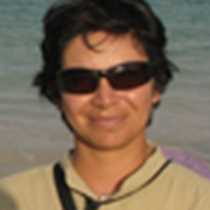Isabela Island
Few vessels visit this remote area of the archipelago, and the National Geographic Islander is one of them. Today we are set to explore the western coast of Isabela, the largest of the Galápagos Islands. Five major volcanoes form this island: Wolf, Darwin, Alcedo, Sierra Negra and Cerro Azul.
This morning we set foot at Urbina Bay, which is part of the flanks of Alcedo. The geological history of this place is quite amazing and very recent. In 1954, an uplift occurred along this coast, an event that may have just taken days, if not hours, and a prelude to an eruption of Alcedo volcano some months later. All along the trail of Urbina we found traces of this event in the form of calcium carbonate still encrusted in the rocks, old sea shells, sand and pebbles. Coverage of vegetation has grown since the uplift, making this the perfect habitat for a population of land iguanas, of which we saw a few during our outing.
Land birds abounded here too, like Darwin finches, Galápagos flycatchers and yellow warblers. Urbina’s rocky coast is very rugged, but still there were many species to be seen here: flightless cormorants, Galápagos penguins and a couple of marine iguanas, the Isabela ones being the largest of the archipelago. After enjoying the sea from this beautiful sandy beach we returned on board, as the National Geographic Islander was to weigh anchor to navigate further south for our afternoon visit to Punta Moreno.
Punta Moreno is a stunning place. It is one massive lava field, the product of successive eruptions in this young area in the last few thousands of years. It is an inhospitable place, with very little soil formation and almost no rainfall. Therefore, few organisms have managed to establish themselves here. Small brackish lagoons are found scattered in this area, which turn out to be real oasis of life. It is here where we find lagoon birds like flamingos, moorhens and paint-billed crakes. The flora of this area includes several endemic species which, with their bright color, make a beautiful contrast on the dark and dull lavas, amongst them the radiate-headed Scalesia and the lance-leafed Darwin shrub.
Back on board, we witnessed a spectacular sunset that set the surroundings ‘on fire’ with its beautiful yellow-orange light. We could not have thought of a better way to end this wonderful day.




